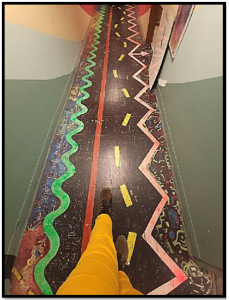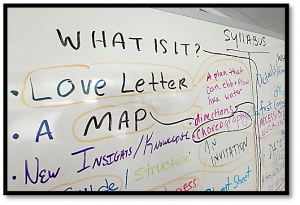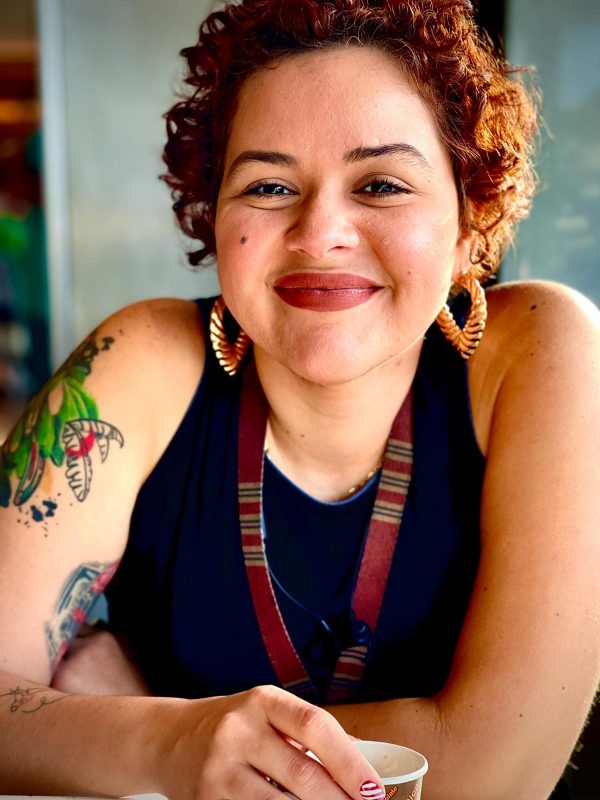María B. Serrano-Abreu (Educational Psychology) is a member of the 22—23 graduate cohort for “Imagining Otherwise: Speculation in the Americas,” the inaugural Interseminars initiative funded by the Mellon Foundation. She shares about her experiences with Interseminars below.
The Interseminars Initiative is gearing up for the second round of the grant in 23—24! Learn more about Interseminars. View the Graduate Fellowship Call for Proposals.
How has the Interseminars Initiative impacted the way you approach your research?

There are three main lessons I can synthesize from Interseminars: 1) research praxis as an artistic process that influences, illustrates, and registers the complexities of social behavior, perceptions, and cultural norms; 2) creative inquiry is in service of radical social transformation by which speculation acts as a strategical research project that aims to provoke the imagination, visualization, and embodiment of high social impact projects; 3) engaging with interdisciplinarity can open a journey for making our research passions sustainable ones through our artistic scholar journey.
Previous culturally responsive and collaborative research projects in which I have performed as a research assistant[1], as well as an antiracist educator[2] have provided me with deep lessons about the power and scope of qualitative methodologies, particularly through storywork. In other words, the collection and registration of stories that reveal complex cultural web of networks by elicitating people’s self-narratives, cuentos and testimonios. These research projects have shown me ways of approaching people’s aesthetics through their narratives and the way they make sense and shared wisdom within their context-based locations and their cultural/communal wealth. Qualitative research is a way of crafting or sculpting knowledge, as the intention of an artist who seeks to shape compelling pieces with a multiplicity of meanings, a call to action, or with the intention of influencing audiences.

How has your understanding of “speculative practice” evolved over the course of this fellowship so far?
The way we have come to the idea of speculation by previously laying the ground on interdisciplinary research, has me thinking about the idea of bridging possibilities across our (fellows) disciplines to innovate and disrupt the world and the structures as we know them. We live convulsive times characterized by social fragmentations which invite us to employ speculation as a provocative methodological invitation for dreaming to a what-if of perfect future tense. That is, what is ought to be completed at a determined point in the future that we are currently innovating and creatively planning altogether.
Discussions regarding interdisciplinarity have started to alleviate what seemed like tensions or challenges in my doctoral path as I grapple with research interests that may have more differences than possibilities of interconnectedness (i.e., program evaluation, Black aesthetics, antiracist education, public policy, arts-based research).
“Interseminars has shown me to approach interdisciplinary research as a ‘tool kit’ with the capacity of unveiling and unpacking layers of complexity toward having a holistic and ecological cultural understanding of a phenomenon under study.” — María B. Serrano-Abreu
Therefore, I am intrigued to experience how the Interseminars journey articulates possibilities by bridging our works and passions for a long and sustained journey as creative scholars and research artists.
References
[1] NSF’s SEAS Islands Alliance which intends to broaden STEM pathways for URM from island territories; UIC & UIUC research project Advancing Racial Equity & Justice in Evaluation Research study.
[2] Through afropolitical aesthetics and #TurbanteoConsciente (consciousness headwrap wearing) workshops.
